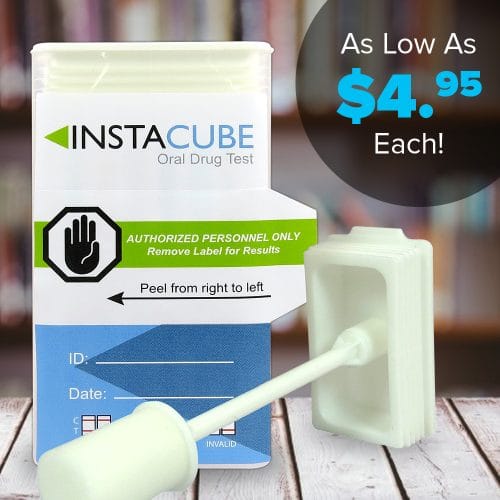In the continuously evolving world of drug testing, new methods are always on the horizon, striving to offer quicker, more reliable results. One of the more recent developments in this area is the oral swab drug test. Employers and organizations are quickly recognizing the merits of this non-invasive method, which can be administered on-site with minimal fuss.
How Oral Swab Drug Tests Work
Oral swab drug tests, also known as saliva tests or mouth swab tests, involve the collection of a saliva sample from an individual. A special swab is placed between the cheek and gums for a few minutes, where it absorbs the saliva. This sample is then tested for the presence of drugs or their metabolites.
Administering an Oral Swab Drug Test: A Step-by-Step Guide
Administering an oral swab drug test is a straightforward process, ensuring that both the test taker and administrator can complete it without much hassle. Here’s a step-by-step guide:
- Preparation: Before beginning, both the test administrator and the person being tested should wash their hands to maintain hygiene. Ensure that the individual hasn’t consumed any food, drink, or tobacco products within the last 10 minutes as this could contaminate the sample.
- Open the Test Kit: Carefully open the oral swab drug test kit, ensuring that all components are present. Most kits will include a swab, a test device, and a collection tube.
- Collect the Sample: Provide the swab to the individual and ask them to place it between their cheek and gums. They should keep it there, often rotating it gently, for the duration specified by the test kit’s instructions—usually a couple of minutes.
- Secure the Sample: Once saturated, the swab should be placed into the collection tube or directly into the test device, depending on the kit’s design. Some tests may require the swab to be broken off into the tube, while others might have it fit snugly into a slot.
- Wait for Results: After the sample is secured, the test will begin to process. A series of lines will usually appear, indicating either a negative or positive result for specific drugs. The time it takes for results can vary, but most tests will provide results within minutes.
- Record and Dispose: Once the results are visible and have been interpreted, they should be recorded. The used test kit, including the swab, should be disposed of in a biohazard container or according to the kit’s disposal instructions.
The test administrator must follow the specific instructions provided with the kit, as variations can exist between brands. Proper administration ensures accurate and reliable results.
The Benefits of Oral Swab Drug Tests
- Non-Invasive: Unlike urine or blood tests, oral swab tests are non-invasive. There’s no need for private restrooms or medical personnel, making the process less intimidating for the individual.
- Quick Results: These tests can offer results within minutes, reducing waiting times and making the process more efficient.
- Hard to Adulterate: It’s challenging for individuals to tamper with or cheat an oral swab test, especially when it’s administered under supervision.
- Shorter Detection Window: Oral swab tests often detect drug use within a few hours to a couple of days of consumption, making them suitable for detecting recent drug use.
Why Employers and Organizations Prefer On-Site, Non-Invasive Tests
- Convenience: On-site testing eliminates the need to transport employees or members to a separate testing facility. This saves both time and money.
- Immediate Action: With quick results, employers can make prompt decisions in situations where immediate action is required, such as post-accident testing.
- Improved Compliance: Employees or members are more likely to be compliant with on-site testing, given the convenience and non-invasive nature of oral swab tests.
- Enhanced Privacy: The non-invasive procedure respects the individual’s privacy, improving trust and cooperation.
The Nuance Between Drug Screening and Testing
It’s essential to understand the distinction between drug screening and drug testing, as the terms are sometimes used interchangeably but serve different purposes. Drug screening is a preliminary process used to identify potential illicit or prescription drug use without being specific about the substance. It’s a quick and cost-effective method to rule out the absence of drugs or to flag potential positives. If a screening result is positive, then a more specific drug test is often conducted to identify the exact drugs and their concentrations. This subsequent test is more accurate and can confirm or refute the initial screening results.
Oral swab drug tests serve a dual purpose in this context. They can act as a rapid screening tool, given their ability to produce results within minutes. If a positive result is detected, the same saliva sample can be sent to a laboratory for a more detailed analysis, effectively serving as the confirmatory drug test. This two-tier approach, all facilitated by a single oral sample, makes the oral drug test an efficient and versatile tool for organizations and employers.
Oral swab drug tests offer a blend of efficiency, reliability, and convenience. They answer the needs of today’s fast-paced workplaces, where time, accuracy, and respect for individual rights are paramount. As drug testing technology continues to evolve, it’s clear that solutions like these, which prioritize user-friendliness without compromising on accuracy, will lead the way.



